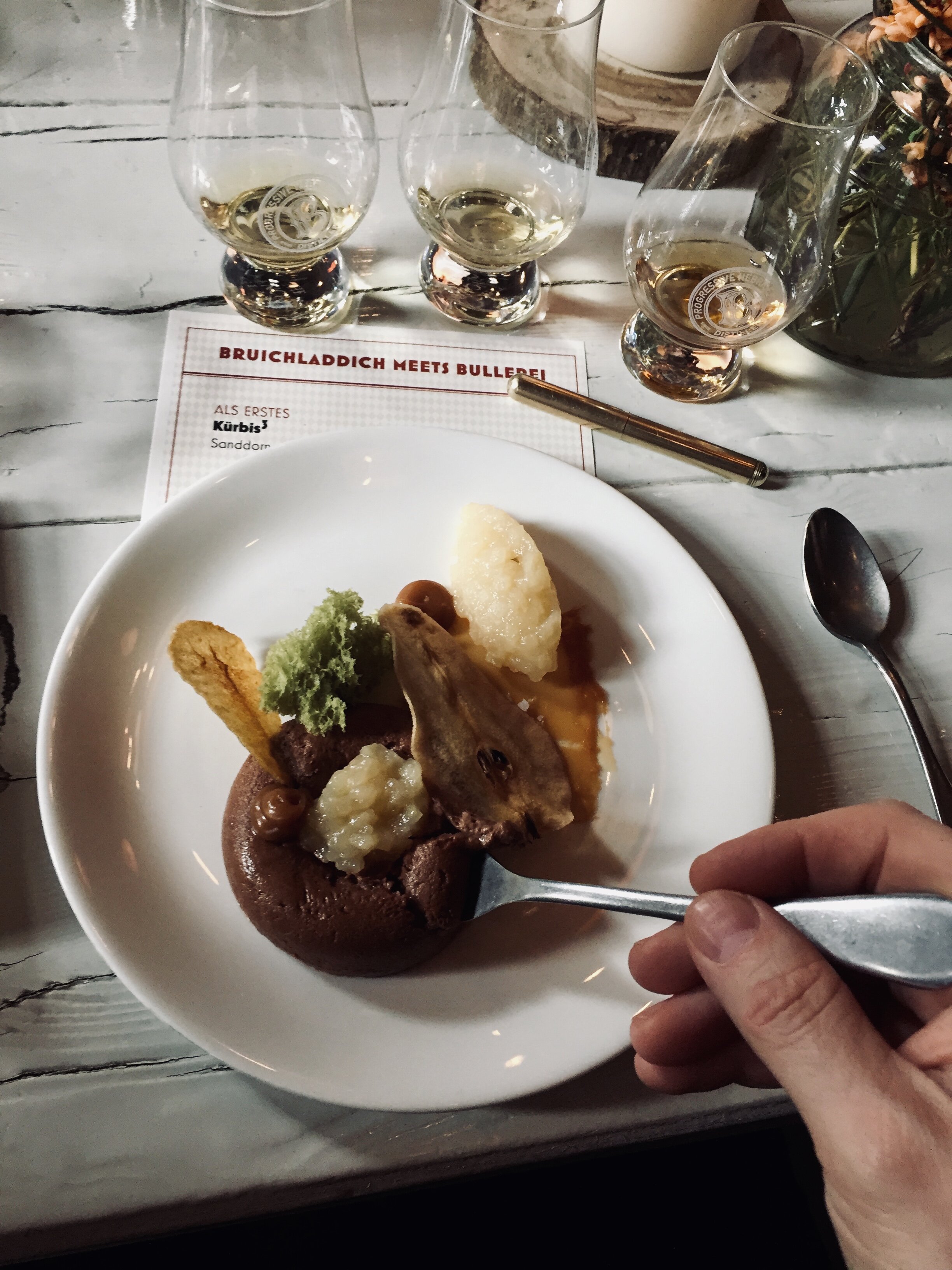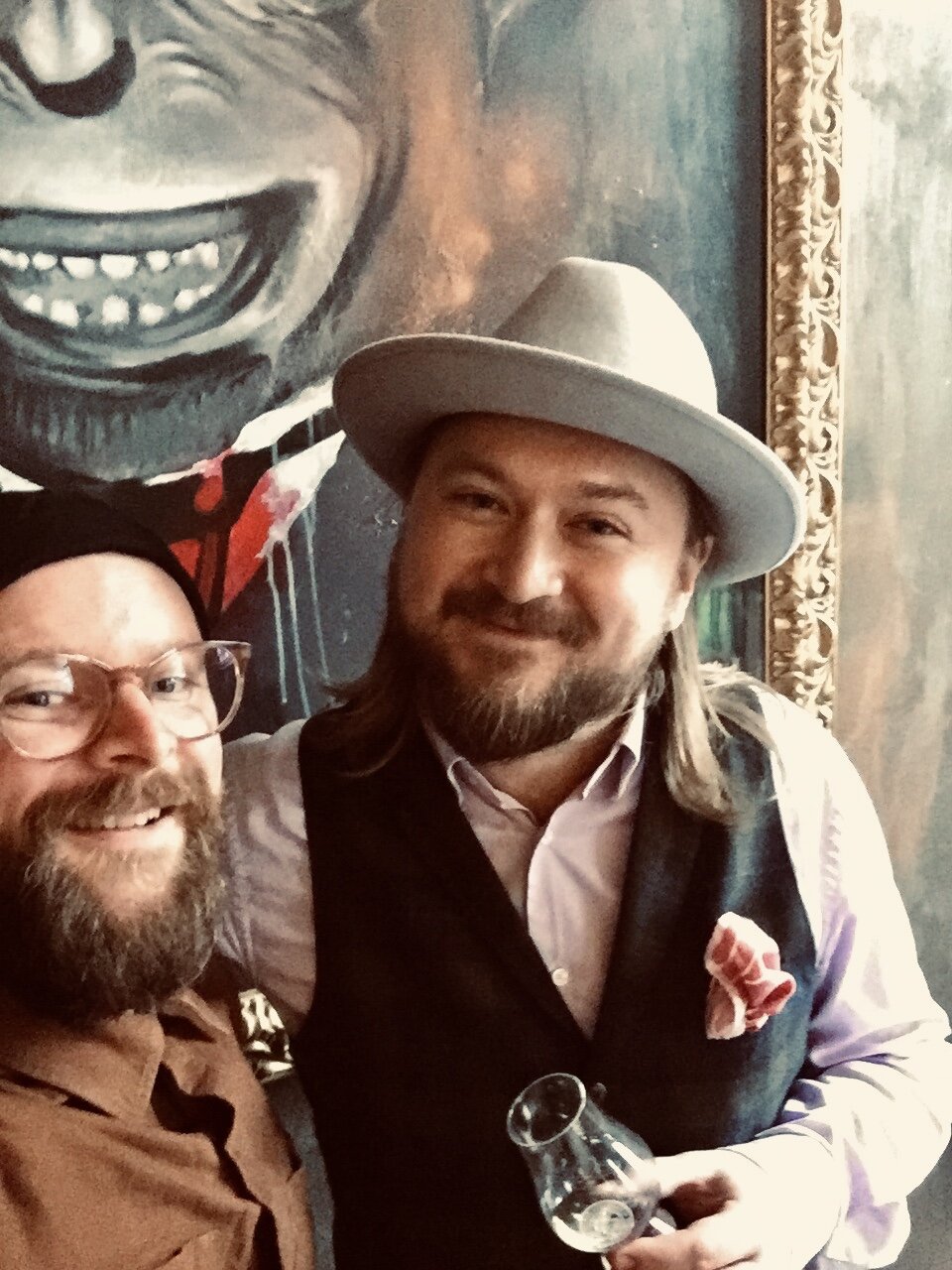Firstly I would like to say thank you to Bruichladdich and their German distributor for inviting me to their event with head distiller Adam Hannett and German brand ambassador Ewald Stromer. I have been a Bruichladdich fan for years, and as some of you know have done more than a couple of events either directly for them or tastings where I’ve used their whiskies. I am involved in some craft distilling myself, so having anything to do with one of the few, let’s called them ‘handcrafted distilleries’, is always a learning experience.
Bruichladdich distillery is located on the southwestern tip of the remote island of Islay where they distill their unique spirits using traditional Victorian equipment. The distillery has had a long and somewhat turbulent history but sadly closed in 1994 due to being, quote “ surplus to requirements”. The person who said this probably also turned down the first iPhone…The distillery was subsequently purchased by a group of private investors led by Mark Reynier of Murray McDavid on 19 December 2000. Jim McEwan, who had worked at Bowmore Distillery since the age of 15, was hired as master distiller and production director. He produced some fantastic spirits and luckily for us a great apprentice in the form of Adam Hannett.
We met during the afternoon in Hamburg with a few other writers, whisky lovers, friends and colleagues in a Hamburg institution; a restaurant called the Bullerei run by celebrity chef Tim Mälzer. We were invited to have a seasonal meal, test some of Port Charlotte’s finest whiskies and listen to the person responsible for creating them. The guys were travelling around Germany as part of a roadshow - rock and roll, right? We started off with a horses neck made with Bruichladdich, in my opinion a simple yet fantastic opener.
As soon as we were all seated Adam started to tell us all about the island of Islay that he calls home and what day to day life is like there. This is something that can be told, yes, but has to be experienced live just like any of these remote unspoiled areas in Ireland and Scotland. Our first course was squash done three way with the northern German classic of sea buckthorn. Although this wasn’t strictly a pairing menu I made sure to try them together anyway. We had the Port Charlotte 10 with it and it matched quite well.
Nose - Salted caramel chocolate, orange (or maybe orange peel?) and seaweed.
Palate - Oaky, smoke and salty seaside feeling.
Finish - Ginger sweets, toast and drying smokiness.
For our next course we had an 8 year old Islay Barley with beef shoulder, roast onions, carrots and Jerusalem artichoke puree. This one might sound a bit underrated but it was the complete opposite. Almost all smoky whiskies go well with beef, but because the Port Charlotte has that slightly more oily, high alcohol presence, they were a match made in heaven. I’ve rarely had beef shoulder that was that tender before. More please! Adam told us a little bit more about the production and the people that run the distillery. It has a fairly low output volume of 1 million but is the island’s largest employer.
Nose - sea breeze, lemon and green fruits but I couldn’t tell what, maybe gooseberry? There was definitely smoke there too but that’s one of the things I love about Port Charlotte, you can smell and taste past the smoke.
Palate - sweet, oily texture, more from the cask here represented by vanilla, and cedar and black pepper.
Finish - Coconut and peat smoke, almond and flowers. The peat smoke tends to fade away.
Our third course was chocolate mousse with dehydrated pear, and salted whisky caramel. I don’t normally eat dessert (in fact I’ve been known to order my starter for dessert again) but I couldn’t resist. Really good. The whisky we had was also very special: the MRC01. This is an example of what good new make can do in a fantastic barrel. This time it was a red wine barrel from a famous wine producing family in Bordeaux. Have a look at the name of the whisky and I’m sure you’ll figure it out. This time the pairing didn’t work with these two heavy hitters but it also didn’t matter as both were great by themselves.
Nose - fruit and peat smoke and loads of them. Raspberry and cherry mostly but it’s salty too.
Palate - warming lively and sweet. This was complex, very complex. Dry smoke and the oak was more prominent with loads of vanilla.
Finish - medicinal peat smoke. You can really tell the quality of the oak in the finish, it’s dry yet moreish with hints of cloves and peaches.
You might have tried some Port Charlotte products before and noticed their oiliness. The reason why? They have oils (like essential oils) in them. Not added to them obviously, but they show up as part of the distillation process. This can be a good or a bad thing: they have very strong flavours and the balance has to be just right to make sure the whisky isn’t too overpowering. I like oily whiskies and Bruichladdich gets the the balance just right. If you want you can slowly add water to a whisky of a higher percent. Add it at the right angle so the water goes under the whisky. Hold a light under it like in the picture below and you can see the whisky, alcohol and oil float on top. The dilution of whisky is more complex than just adding water. Certain chemicals within whisky, particularly fusel oils and fatty acids, have limited solubility in water. When whisky is diluted with water to 40% alcohol these oils can give the whisky a cloudy appearance. For improved shelf appearance they are generally removed by cold filtering. This process makes the product optically more consistent but unfortunately removes some flavour too. Bruichladdich don’t do this; it’s part of their approach to a handmade honest product. When we’re talking about drinking your whisky neat or with a splash of water my preference is always non-chill filtered.
#werbung #advertising Bruichladdich helped out with the running costs of this website so this technically counts as advertising. As you know though I have been a fan of the distillery for years so these views are completely my own.











